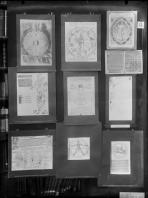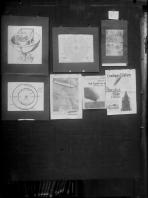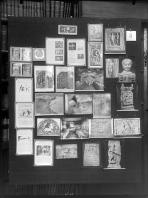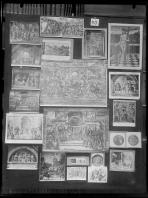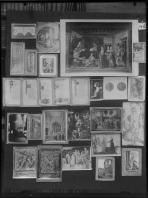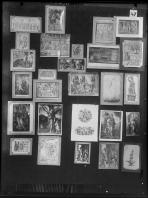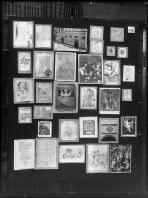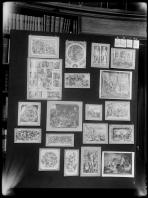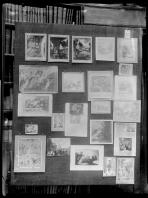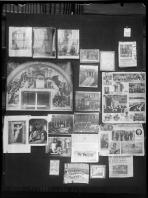Fortuna. Symbol of the struggle of the self-liberating man (merchant)
Warburg presents diverse ways that the pagan goddess, Fortuna, was adopted by Renaissance artists, writers, and printers. Many of this panel's images are taken from manuscripts and printed books, including works by Christine de Pisan, Boccaccio, Erasmus, and Boethius. While this establishes essential links between word and image, and while many of the images are transparently allegorical, the Überschrift suggests that the panel aims to create a dialectic of symbols wherein “self-liberation” may be glimpsed, rather than merely offering an iconographic or allegorical interpretation. The panel shows how the symbolization of Fortuna shifts from the medieval wheel, with its connotations of human helplessness, to an alluring female figure whose fluttering garments resemble a ship's sails and whose hand controls the tiller of fate. Thus the way is also paved for panel 49, where Mantegna’s grisailles achieve “metaphoric distance.”
Suggested readings